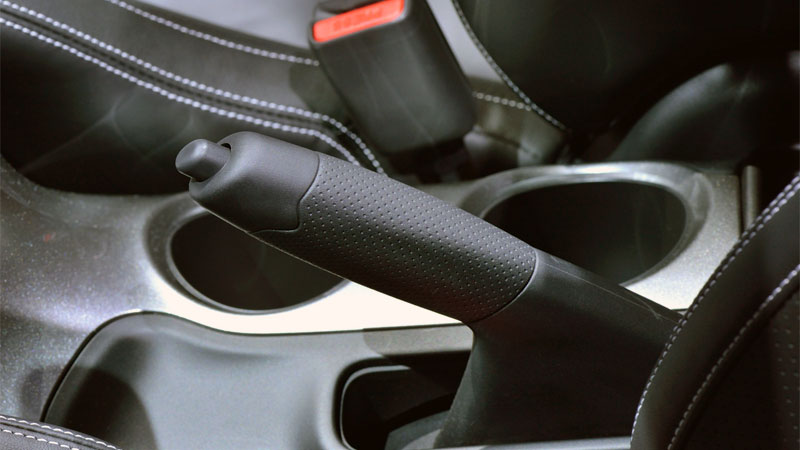Last Updated on March 15, 2022
Did you just get home and realize you were driving down the road with your parking brake on? Or are you just curious about what would happen if you did?
Perhaps you can’t get the parking brake unstuck and you’re just trying to get it to the shop. Whether it’s curiosity or necessity, we’ll “brake” down everything you need to know here!
While it can be a pretty serious problem, if you know what’s happening, you’re far more likely to recognize the symptoms and make an informed decision about what you should do.
How a Parking Brake Works
Before you can understand what will happen if you drive with the e-brake on, you need to understand how it works. If your vehicle has a lever that you pull to apply the emergency brake, the lever attaches directly to a cable.
When you pull the lever, you pull the cable, which activates the parking brake on your rear wheels. The brake pads push up against the rear drums and this stops your vehicle or keeps it from moving.
If your vehicle has an electronic parking brake, it works off the same principle, but there’s no cable and electronic parking brake. Often manufacturers use an electronic parking brake when the rear axle uses disc brakes, and they don’t want to install a smaller drum brake for the e-brake.
When you activate the electronic parking brake, an electrical motor turns a threaded piston in the caliper, which holds the disc brakes in place.
This video does a good job explaining how a cable-driven (foot pedal variation) parking brake system works. A typical handbrake works the same way.
What Happens if You Drive With the Parking Brake On?
It doesn’t matter if you use an electric parking brake or a cable one, if you’re driving with the parking brake on, you’re going to experience the same problems.
#1 – Burning Smell
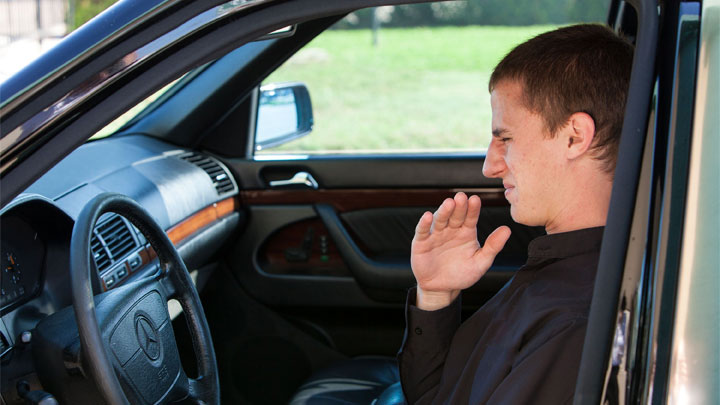
If you’re driving down the road with your parking brake on, you won’t have the same acceleration ability that you normally have, and there’s a good chance if you go too far you’ll start to notice a burning smell.
This smell comes from your pads overheating from the excess friction between them and the rotors or drums.
But while this is a common symptom of driving with a parking brake on, it’s not really telling you what can happen to the system.
#2 – Possible Fire
While this is certainly the worst-case scenario, it’s something that we’ve seen happen. Friction creates a ton of heat, and if the brakes heat up too much they will catch fire.
The last thing you want is a fire on your vehicle, but it’s certainly a possibility if you’re driving with the parking brake on.
#3 – Glazing the Brakes
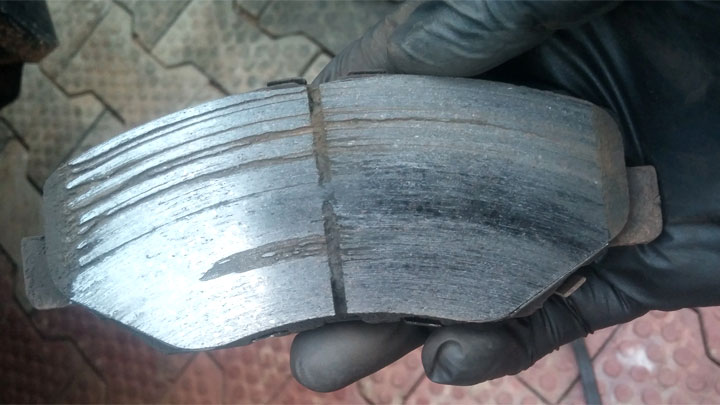
This is by far the most common symptom of driving with your parking brake on, but it’s a pretty serious one. All that excess friction overheats the brakes, and when they cool back down it can create a “glaze” over both the drums/rotors and pads.
When that happens, the surface is slicker than it should be, and that dramatically reduces your vehicle’s braking power.
Sometimes normal usage can work through this glaze and restore your vehicle’s normal braking ability, other times you’ll need to replace the pads and rotors/drums.
Related: Replace vs Resurface Brake Rotors
#4 – E-Brake Cable Becomes Misadjusted
Your parking brake works off a very fine adjustment where the brake cable meets is connected to the brake lever. Too tight and the brakes won’t fully release when you disengage the parking brake, but too loose and they won’t engage enough when you apply the parking brake.
When you’re driving around with the parking brake engaged, it wears down the pads, which can throw off the adjustment by making it too loose. If that happens, you’ll need to readjust the parking brake or it won’t provide the stopping power you need.
Why Do Cars Allow You To Drive With the Emergency Brake On?
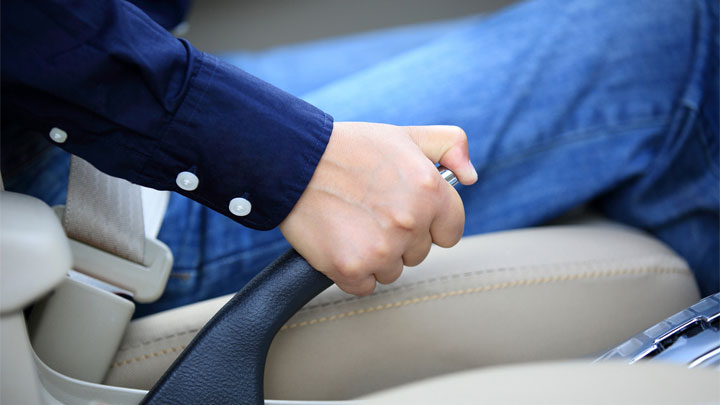
If you’re not supposed to drive around with the emergency brake on, why do vehicles let you do it? The truth is that while you should never drive with your emergency brakes engaged, it does serve as a last resort measure to stop your vehicle if your traditional brakes fail.
While it’s certainly not ideal, it’s better than rolling down the road with no brakes at all! Another, less important, reason for using your emergency brake while driving is that it makes drifting a lot easier.
Sure, it’s not something that you need while you’re driving down the street, but under the right conditions (check with your local car clubs or race tracks), drifting can be a blast and having a manual parking brake makes it all a lot easier.
See Also: How to Do a Burnout With an Automatic Transmission
What Happens if You Use the Emergency Brake While Driving?
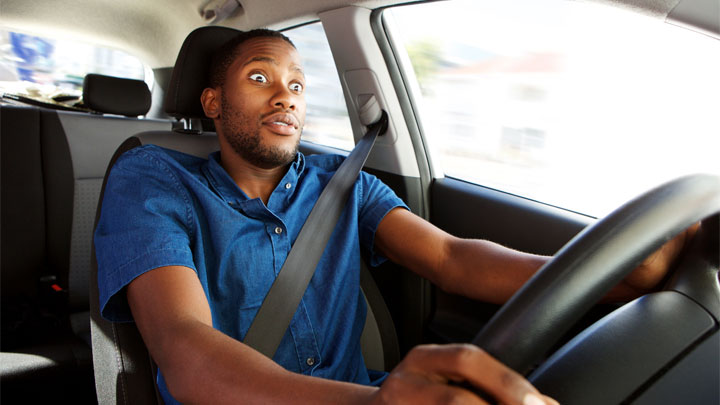
It’s something that’s crossed all of our minds, what would happen if you pulled your parking brake while you’re driving down the road? Well, under most conditions the result wouldn’t be pretty.
If you are traveling at lower speeds, think less than 10 miles per hour, and you pull your parking brake at full force, it’s going to be no different than you slamming on your brakes.
At higher speeds, it’ll lock your back brakes up, and you’re going to skid down the road. You could potentially “fishtail” as well, and when that happens, the rear end of your vehicle slides out to one side.
Of course, this is if you completely activate your emergency brake while driving. The other option you have is to gently apply your emergency brake while you’re driving. This is also known as feathering the brakes, and it’ll allow you to control the stop. However, this method is far less effective than your traditional brakes.

